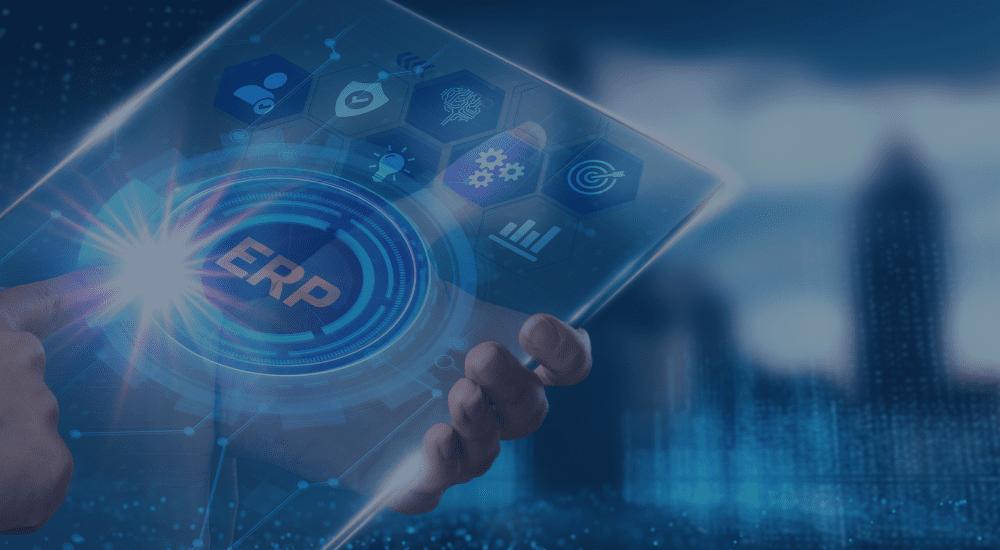Whether you’re running on older technologies, such as AS400 applications, or on more modern, cloud-based platforms, determining your path forward is a critical one – one that can, in fact, significantly impact your future valuation.
The creation of an ERP approach is a strategic decision that goes beyond IT considerations. It has far-reaching implications for a company’s efficiency, compliance, growth potential, financial performance, and overall attractiveness to investors. Companies that carefully evaluate and choose the right ERP solution can see a substantial positive impact on their valuation.
Through our work with a diverse range of clients, Cuesta aims to share our learnings and insights to arm you with essential knowledge on how to approach a strategic ERP selection and some key considerations. We hope you enjoy this 2-part series – thanks for reading.
Powering the enterprise backbone.
Today’s modern ERP capability brings together a suite of advanced modules that can be housed in the cloud or on-premise to power an organization’s backbone. From managing accounting and financial processes, to human resources, supply chain management, manufacturing and customer management, it’s an essential capability that touches all facets of a company. As organizations grow – organically or via M&A – the landscape quickly becomes complex, fraught with costs and capability limitations that must be strategically and proactively assessed.
The right ERP is essential to running a sound business but must be looked at strategically to determine a smart path forward as the enterprise scales – to enable organic growth but to also position for M&A activity.
A common challenge is ERP “sprawl,” especially among companies that have been highly acquisitive or operate in multiple geographies. While there are sometimes reasons that multiple ERPs are necessary (e.g., country-specific regulatory requirements, unique ERP needs of specific business units, etc.), it’s best practice to operate as a single, full-feature ERP platform to enable standardized business processes and to reduce to total net cost of ownership.
The age of automation is raising the stakes.
With increasingly complex business processes, having deep automation capabilities embedded in an ERP solution has become essential to power a business’ growth ambitions (and also to drive margin performance through cost optimization). Modern, cloud-based ERP platforms offer a broad range of AI capabilities that harness data at scale in ways that were previously unimaginable, providing new levers for growth, efficiency, and control. In today’s business context these capabilities have become table stakes.
A major benefit of modern ERP solutions is reduced manual load on the business and its employees. When businesses acquire ERP software solutions but fail to fully implement the levels of automation available (including up and down-stream integrations), choosing instead to continue manual intervention, spreadsheet export/imports, and manual off-line processes, they’re unfortunately failing to eliminate the inefficiencies that software is designed to remedy.
Scale is quickly impeded, and management and maintenance costs spiral out of control, becoming a significant drag on margins, which directly impact company valuation for M&A transactions. Quite simply, investors will look very favorably on a company that is harnessing the potential of automation across its core business process.
Evaluating ERP platform options – with valuation impact in mind.
Our team at Cuesta was recently commissioned by a leading food service manufacturer to formulate an ERP strategy to support several business units, including a recent acquisition. The scope included assessing a legacy AS400-based application to determine how the company’s valuation would be impacted by having legacy tech in place and developing a set of strategic go-forward ERP options.
Our unique challenge was to help answer a question many businesses ultimately face today: doubling-down on existing ERP investments or migrating to a modern ERP platform. To understand this better, let us first share a brief macro-view of the main strategic options available and the impact of each:
- Legacy, AS400-based ERPs – While it’s false that AS400 applications are incapable of supporting a business today, there are several things about these legacy on-premise applications that are unequivocally true. First, the talent pool to develop and maintain these systems is shrinking and software development is inherently inefficient compared to modern technologies (e.g., no open source, lack of development/testing tools, etc.). Next, commercially-written AS400 software can be considered end-of-life and unsupported at any time. Also, user interfaces require a longer learning curve for end users and are often inefficient. Finally, moving data in and out of these systems is harder and less flexible.
- Modern ERPs – The key questions to consider for a modern ERP platform like SAP, NetSuite, Infor, Epicor, etc. are: Is it able to scale with the company? Does it provide adequate breadth of capabilities and automation? Is it surrounded by strong point solutions that can enhance the company’s operations where the ERP is weak?
- Custom ERPs – Most importantly custom ERPs impact valuation – they can either be a huge detriment or a nice benefit. Whether the impact is positive or negative comes down to whether the custom ERP is built on modern and scalable technologies; offers a feature set and level of automation that is comparable to off-the-shelf ERPs (no gaps being filled by manual processes or additional software solutions); and is uniquely tailored to handle the complexities of the company’s business in such a way that creates a level of differentiation. If any of these are not true, the solution will likely be viewed as a detriment when it comes to valuation.
With this being said, a weak ERP capability (e.g., older, fewer features, etc.) does not necessarily have to be a major red-flag, and it’s not always necessary to replace it with the latest and greatest. If a company can reduce its use of a sub-optimal ERP to just handle finance/accounting and pair it with fit-for-purpose point solutions to handle other key functionality, one can remediate valuation risk.
So, to summarize, an ERP choice is a strategic decision that goes beyond IT considerations. It has far-reaching implications for a company’s growth potential and overall attractiveness to investors. Please stay tuned for part two in this series, where we will share a real-world experience and some practical advice on how to approach the next steps in your ERP planning process.




